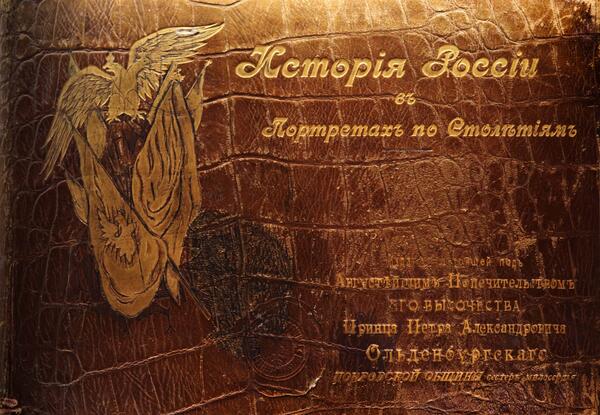The illustrated album ‘History in Portraits Throughout Centuries’ describes the history of the Russian state from the accession of Rurik to the throne to the era of the last emperor Nicholas II. It was published in 1903 by the Pokrovsky Community of the Sisters of Charity under the August guardianship of His Highness Prince Petr of Oldenburg. The community was founded by Alexandra Petrovna, the eldest daughter of Petr and Theresa of Oldenburg, and nun Anastasia, the wife of Grand Duke Nikolay Nikolayevich (senior).
The album presents all Russian princes and tsars, starting from the Rurik dynasty, describes the main events in their reign before the Time of Troubles, the accession of the Romanovs and the most important milestones in the history of Russia over the three centuries of their power. In addition, the book includes illustrations, portraits, color maps and plans, a lot of photographs, including rare ones. In total, more than 40 sheets of illustrations, 10 color historical and geographical maps of Russia in different eras, 67 medallions on special paper with images from Rurik to Emperor Nicholas II were selected for publication.
The album was released in two versions: a cheaper one in calico binding with black and gold embossing and a more expensive one bound in natural leather. The edge of the book was covered with gold paint, the endpapers were decorated with colored paper with floral designs. A silk ribbon was sewn into the spine of the edition for use as a bookmark.
The book received the highest award at the 1st All-Russian Exhibition of Monastic Works and Church Utensils, as well as a gold medal at the 1904 International Exhibition in Paris. The turn of the 19th and 20th centuries was characterized by a real exhibition boom all over the world. Industrial, agricultural, handicraft and art exhibitions were held in Russia, Europe, and America. Some monasteries and workshops participated in them and even received awards, including international ones. But the only special church exhibition took place in 1904 in the vast halls of the Taurida Palace. It was arranged by the Society for the Improvement of the Lives of Wards of the Imperial Orphanage. The exhibition had two main goals: to acquaint visitors with the nature of works made in monasteries and workshops, and to raise funds for children who had lost their families.



